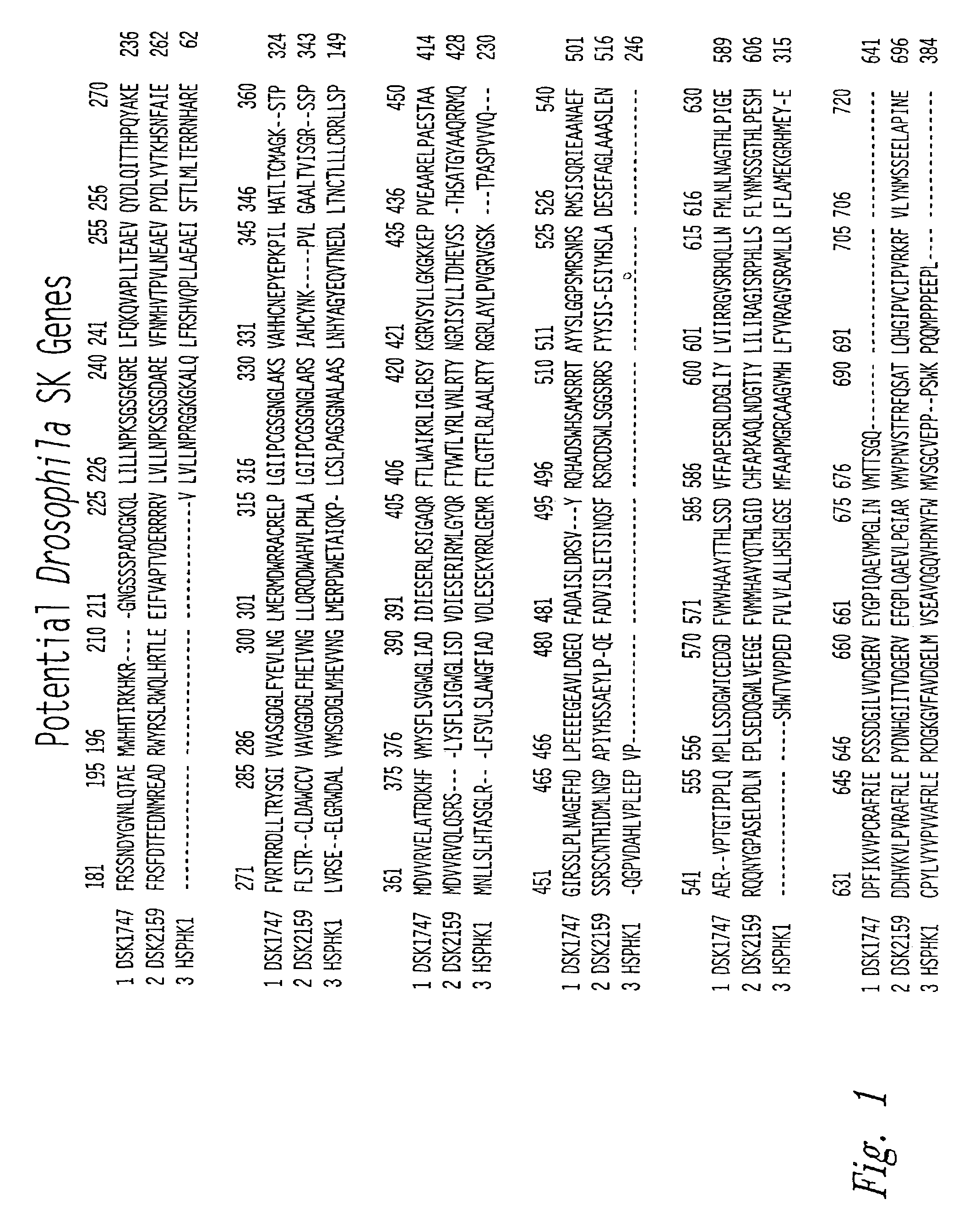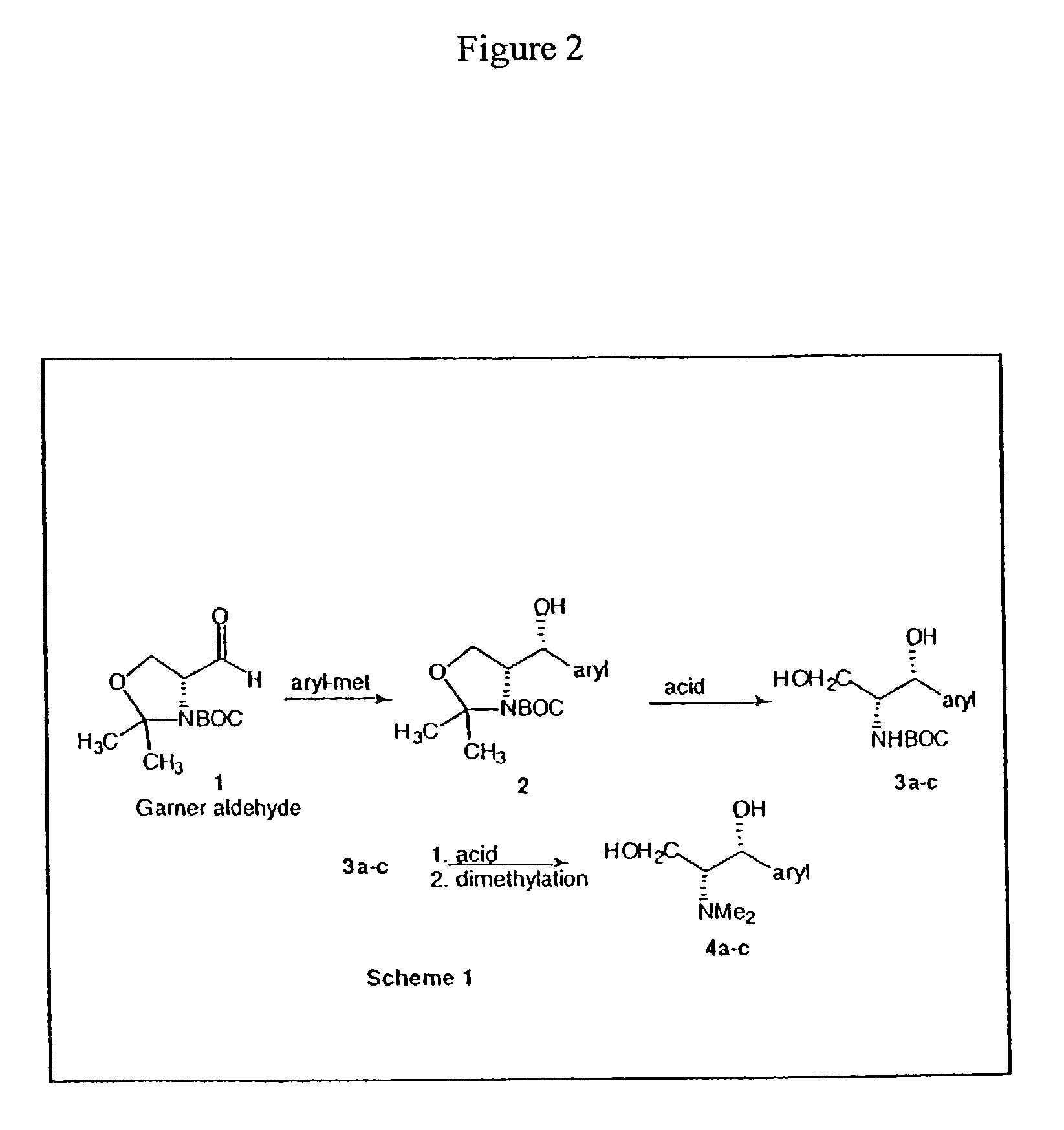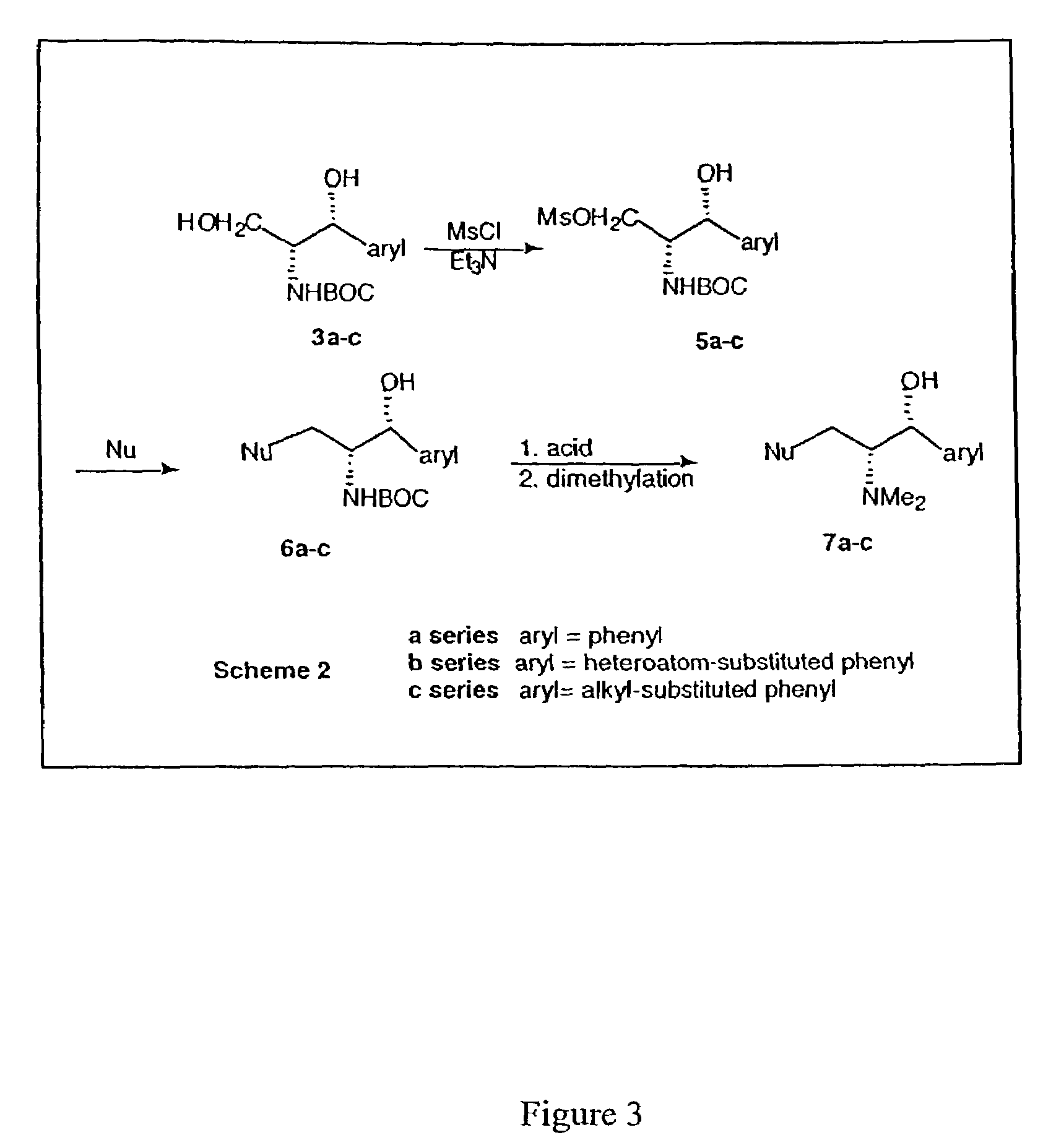Compositions and methods for the modulation of sphingolipid metabolism and/or signaling
a sphingolipid and signaling technology, applied in the field of cancer detection and therapy, can solve the problems of cancer death, no vaccine or other universally successful method for the prevention or treatment of breast cancer, and significant health problems of breast cancer, and achieve the effects of increasing sphingosine-1-phosphate, modulating sphingosine metabolism, and decreasing sphingosine-1-phospha
- Summary
- Abstract
- Description
- Claims
- Application Information
AI Technical Summary
Benefits of technology
Problems solved by technology
Method used
Image
Examples
example 1
Isolation and Characterization of SPL cDNA from Drosophila melanogaster (Sply)
[0194]In order to seek out the Drosophila melanogaster SPL cDNA and genomic sequence, the D. melanogaster genomic database was searched for sequences which demonstrated significant homology to human SPL cDNA. The Drosophila melanogaster genomic database (http: / / flybase.bio.indiana.edu) was searched for predicted proteins using mouse (accession number AAH26135; amino acid sequence set forth in SEQ ID NO:6) and human (accession number XP—166113; amino acid sequence set forth in SEQ ID NO:18) SPL sequences. DNA homology searches were performed via the Berkeley Drosophila Genome Project web site using the BLAST search program (http: / / www.ncbi.nlm.nih.gov). One computed gene (CG8946) was identified that corresponded to a predicted SPL gene. Subsequently, two ESTs (LP04413, cDNA set forth in SEQ ID NO:27 and GH13783, cDNA set forth in SEQ ID NO:26) were identified which contained open reading frames that corresp...
example 2
Generation and Characterization of SPL Transposon Mutant D. melanogaster
[0201]Drosophila melanogaster stocks used in the experiments described herein are as follows: Wild type Canton-S (BL-1), Sply05091 (BL-11393), lace2 (BL-3156) and lacek05305 (BL-12176) lines, obtained from the Bloomington Drosophila Stock Center (Indiana University, Bloomington, Ind.). General fly husbandry was performed as described (Sullivan, W., Ashburner, M. and Hawley, R. S. (2000). Drosophila protocols. Cold Spring Harbor, N.Y.: Cold Spring Harbor Laboratory Press)
[0202]Flies from the Berkeley Drosophila Genome Project gene disruption project (Spradling, A. C., Stern, D. M., Kiss, I., Roote, J., Laverty, T. and Rubin, G. M. (1995). Gene disruptions using P transposable elements: an integral component of the Drosophila genome project. Proc Natl Acad Sci USA 92, 10824-30.) were identified that harbor a transposon within the Sply open reading frame (designated Sply05091). The transposon is located at nucleot...
example 3
Further Characterization of the Sply P-element Insertional Mutant Drosophila melanogaster
[0205]The sphingolipids of Drosophila melanogaster contain C14 and C16 sphingosine and dihydrosphingosine LCBs (see Example 4). Extracts of wild type and mutant flies were compared for their ability to degrade endogenous Drosophila melanogaster LCBPs in vitro. Extracts of Sply05091 mutants failed to catabolize endogenous LCBPs, whereas extracts of wild type flies degraded endogenous Drosophila melanogaster LCBPs, indicating that the Sply gene product is responsible for LCBP catabolism in this organism.
[0206]To determine whether loss of Sply expression affects the levels of Drosophila melanogaster endogenous LCBs and corresponding LCBPs, the sphingolipid profile of homozygous Sply05091 flies was evaluated and compared to wild type controls. Homozygous Sply05091 adults demonstrated an eight-fold increase in LCBs and a 20-fold increase in LCBPs when compared to wild type (Table 1), indicating sign...
PUM
| Property | Measurement | Unit |
|---|---|---|
| pH | aaaaa | aaaaa |
| molecular weights | aaaaa | aaaaa |
| molecular weights | aaaaa | aaaaa |
Abstract
Description
Claims
Application Information
 Login to View More
Login to View More - R&D
- Intellectual Property
- Life Sciences
- Materials
- Tech Scout
- Unparalleled Data Quality
- Higher Quality Content
- 60% Fewer Hallucinations
Browse by: Latest US Patents, China's latest patents, Technical Efficacy Thesaurus, Application Domain, Technology Topic, Popular Technical Reports.
© 2025 PatSnap. All rights reserved.Legal|Privacy policy|Modern Slavery Act Transparency Statement|Sitemap|About US| Contact US: help@patsnap.com



